In the midst of fulfilling our parenting duties, we managed to celebrate dear wife's birthday. Thanks to Mum who agreed to babysit for us.
We wanted to have KTV lunch, but that will take too much time. In the end, we had a simple buffet lunch at Straits Cafe, Hotel Rendezvous.


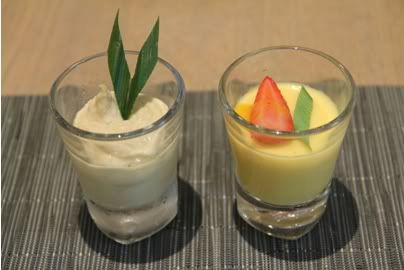 Dear wife showing the birthday card. This year, for present, I made a calendar with photos of our little one.
Dear wife showing the birthday card. This year, for present, I made a calendar with photos of our little one.
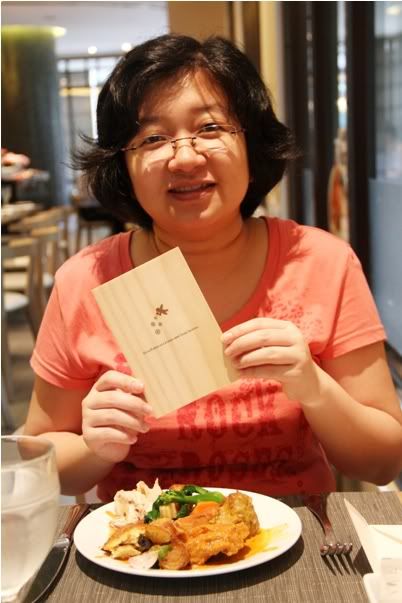 Last year, we visited the Quest for Immortality exhibition at the National Museum. This year we visited another exhibition! I think its me, rather than her, who is fond of visiting the museum. :p
Last year, we visited the Quest for Immortality exhibition at the National Museum. This year we visited another exhibition! I think its me, rather than her, who is fond of visiting the museum. :p
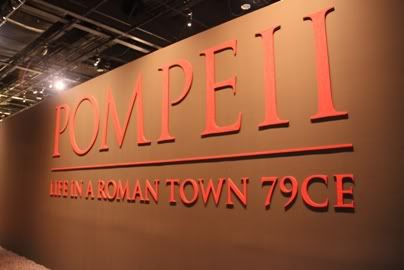 Pompeii, Life In A Roman Town 79CE exhibition, was held at the galleries from 16 Oct 2010 till 23 Jan 2011. It showcased the lives of people (temples, baths, public buildings, entertainments, houses, etc.) in Pompeii, before the city was destroyed during the Mount Vesuvius eruption in 79CE.
Pompeii, Life In A Roman Town 79CE exhibition, was held at the galleries from 16 Oct 2010 till 23 Jan 2011. It showcased the lives of people (temples, baths, public buildings, entertainments, houses, etc.) in Pompeii, before the city was destroyed during the Mount Vesuvius eruption in 79CE.
The exhibition began with the resin casts of the victims found at Pompeii.
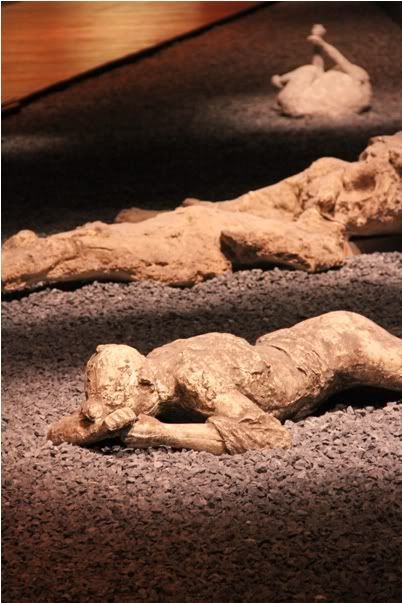 The ash from the eruption covered the victims and hardened. Voids were created when the victims decomposed. In 1863, museum director, Giuseppe Fiorelli, filled the voids with liquid plaster to form the cast of the victims.
The ash from the eruption covered the victims and hardened. Voids were created when the victims decomposed. In 1863, museum director, Giuseppe Fiorelli, filled the voids with liquid plaster to form the cast of the victims.
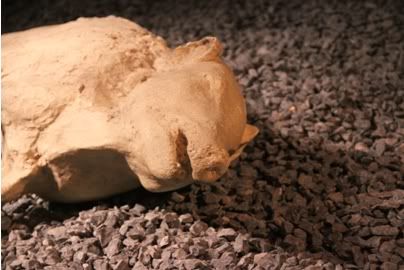 The casts showed the victims in states of horror and anguish. Nobody, in the path of the pyroclastic flows of ash, was spared.
The casts showed the victims in states of horror and anguish. Nobody, in the path of the pyroclastic flows of ash, was spared.
Some exhibits showcased the commerce in Pompeii. For example, this bronze tool was used as a measuring scale.
 With access to the river Sarno, and the sea, Pompeii was an important trading town in the Roman Empire.
With access to the river Sarno, and the sea, Pompeii was an important trading town in the Roman Empire.
Ceramic plates were used.
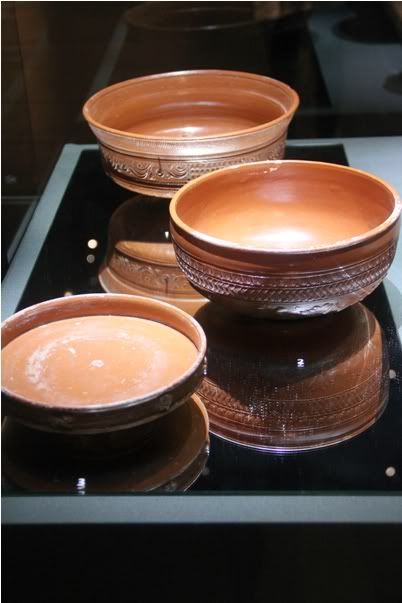
Entertainment for the public included the gladiatorial games, much like the rest of the Roman Empire. Here as some artifacts:
Intricate carvings on the gladiator's helmet, found at Quadriporticus of the Theatres.
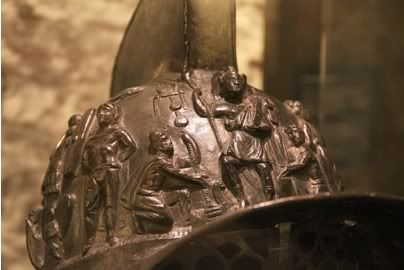 A bronze shin guard.
A bronze shin guard.
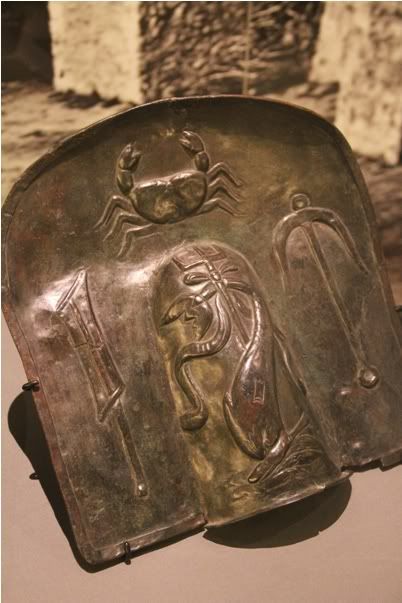 Me, wearing a mock-up helmet. Ha ha...
Me, wearing a mock-up helmet. Ha ha...
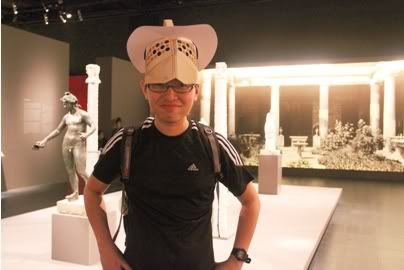 A game of dices...
A game of dices...
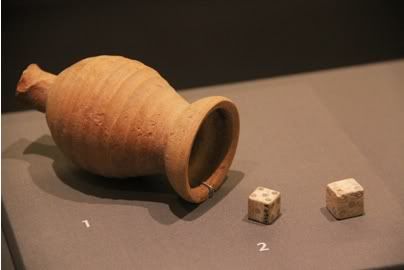 Plaster copy of relief panel...
Plaster copy of relief panel...
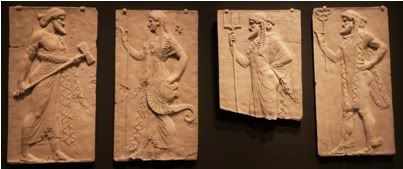
Frescoes and sculptures found at some of the houses of the rich.
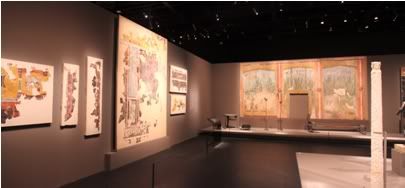
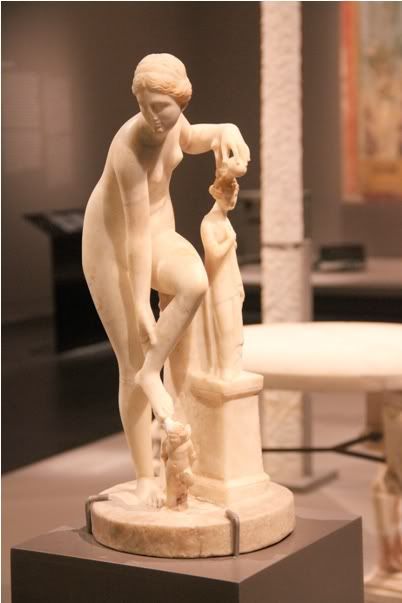
The exhibition touched on a very small part of the history of Pompeii. I went home, and watched a couple of documentaries which reviewed much more: Cities of the Underworld - Beneath Vesuvius, and BBC's Pompeii: Life and Death in a Roman Town. I had thought that Ephesus is the world's most well preserved Roman city, Pompeii proved otherwise. I would be keen to visit it someday too! In the meantime, our short break had ended, and it is back to our dearest darling at home!
We wanted to have KTV lunch, but that will take too much time. In the end, we had a simple buffet lunch at Straits Cafe, Hotel Rendezvous.





The exhibition began with the resin casts of the victims found at Pompeii.


Some exhibits showcased the commerce in Pompeii. For example, this bronze tool was used as a measuring scale.

Ceramic plates were used.

Entertainment for the public included the gladiatorial games, much like the rest of the Roman Empire. Here as some artifacts:
Intricate carvings on the gladiator's helmet, found at Quadriporticus of the Theatres.





Frescoes and sculptures found at some of the houses of the rich.


The exhibition touched on a very small part of the history of Pompeii. I went home, and watched a couple of documentaries which reviewed much more: Cities of the Underworld - Beneath Vesuvius, and BBC's Pompeii: Life and Death in a Roman Town. I had thought that Ephesus is the world's most well preserved Roman city, Pompeii proved otherwise. I would be keen to visit it someday too! In the meantime, our short break had ended, and it is back to our dearest darling at home!
Comments